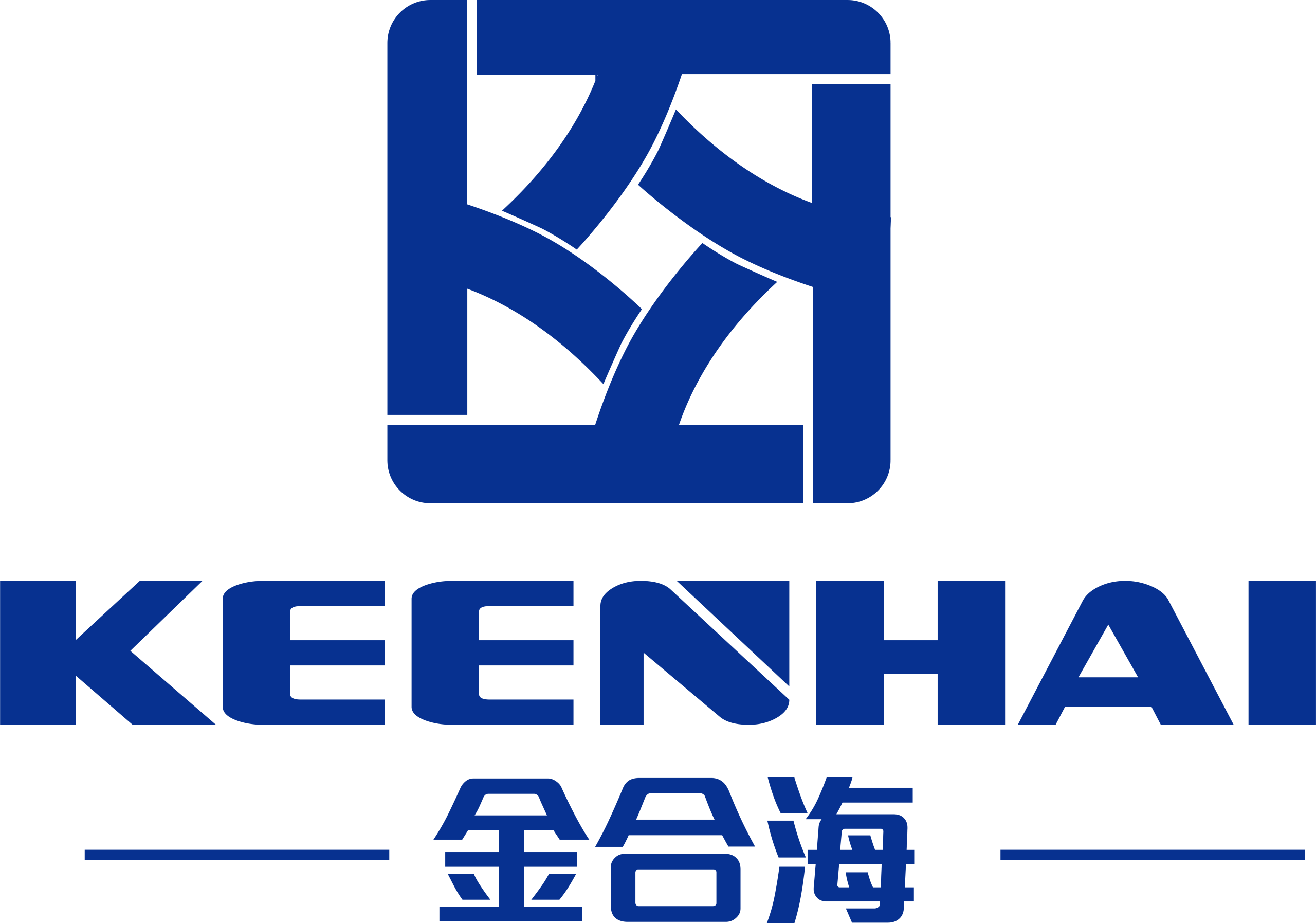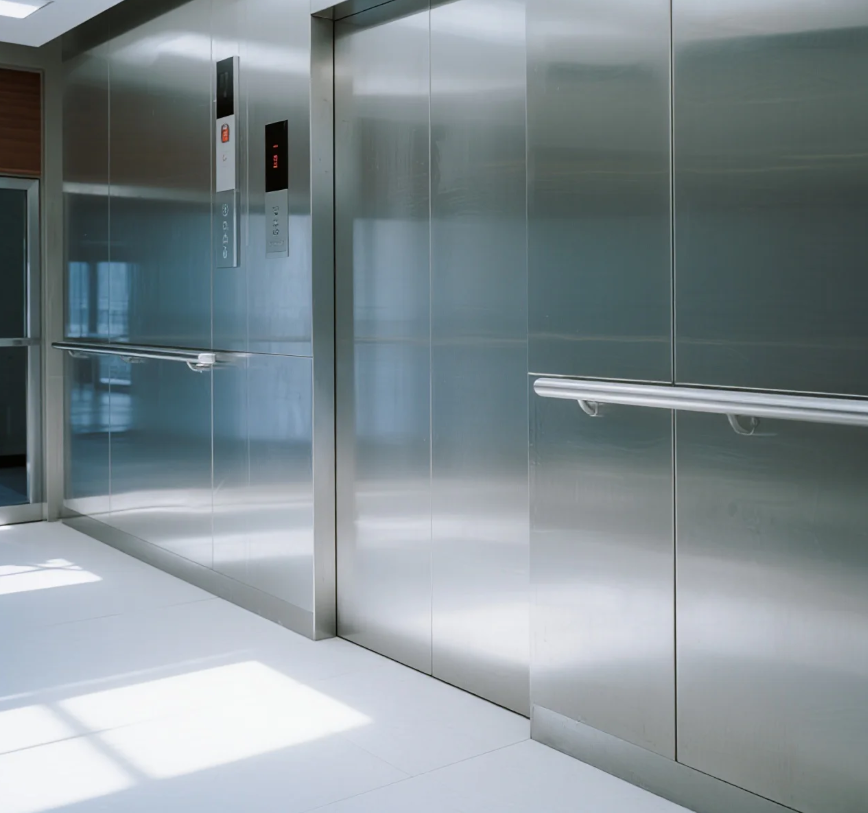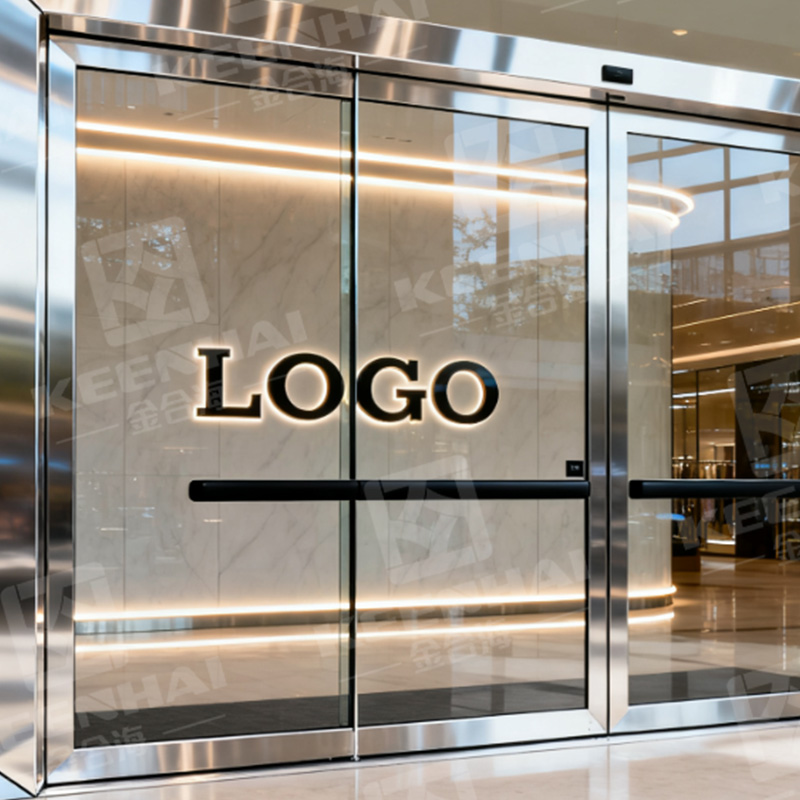Elevators use PVD stainless steel sheet for its durability, corrosion resistance, and sleek appearance.
Durability and Structural Strength
Resistance to Wear and Tear in High-Traffic Areas
Elevator interiors face relentless daily abuse — designers pick stainless steel because it stays serviceable and attractive under heavy, repeated use. In busy office towers, hospitals, and transit hubs you can expect 200,000–1,000,000 passenger trips per year, and those trips bring scuffs from shoes, trolley strikes, luggage impacts, and cleaning abrasion. Because स्टेनलेस स्टील combines a dense microstructure with finish options that hide fine marks, buildings keep a clean, professional look while stretching the interval between repairs.
Factory-rolled स्टेनलेस स्टील शीट in thicknesses from 0.8 mm to 2.0 mm serves most cabin panel needs; use thicker panels (1.5–3.0 mm) for doors and high-impact zones. Finishes matter: brushed or hairline textures disguise micro-scratches, while patterned or PVD-finished faces delay visible wear from contact. On top of that, you can apply a clear protective film or handrail guards in high-traffic lobbies to reduce surface damage — expect protective film to cut visible abrasion by 30%–60% and require replacement every 6–18 months depending on traffic.
For routine upkeep, follow this concrete procedure to preserve finishes and avoid costly panel swaps:
-
Inspect monthly: walk each car and door, photograph dents or seam issues, and log location + severity so you track repeat problem spots.
-
Clean weekly: wipe panels with a pH-neutral cleaner and soft microfiber cloths; do not use chloride-containing bleaches or abrasive pads that accelerate pitting or grind the finish.
-
Protect and repair: for corner guards, handrail covers, or temporary protective film, install items rated for 6–18 months of service; schedule panel replacement only after repeated damage appears in the same zone.
These steps reduce emergency repairs, and when teams follow them, buildings cut mid-life panel replacement frequency by measurable amounts.
Ability to Withstand Heavy Loads and Frequent Use
Elevator doors, frames, and mounting points undergo millions of cycles; stainless steel supplies the tensile strength, yield margin, and ductility that let doors operate reliably for decades. Engineers commonly specify austenitic grades because fabricators form, weld, and fasten them without cracking while the metal keeps its structural performance under shear, compression, and impact loads.
| Property / Feature | 304 (typical) | 316 (typical) | Practical effect for elevators |
|---|---|---|---|
| Tensile strength (MPa) | ~500–700 | ~480–700 | Both ranges give high resistance to tearing during door cycles and fabrication. |
| Yield strength (0.2% offset, MPa) | ~205–215 | ~205–290 | Higher yield reduces permanent dents under repeated impact or heavy loads. |
| Elongation (%) | ~40% | ~30–50% | Good formability and toughness let fabricators shape panels without cracking. |
| Common panel thickness (mm) | 0.8–2.0 (cabins); 1.0–3.0 (doors) | same, but choose thicker where impact/corrosion risk rises | Specify thicker stock where you expect more hits or heavier hardware. |
| Relative material cost | baseline | ~15%–40% higher | 316 costs more up front but outperforms in chloride-rich or heavy-cleaning environments. |
Match grade and thickness to the building’s real duty profile, and you convert a modest material premium into far fewer repairs. For example, if a property expects >400,000 trips/year, specify door panels at 1.5–3.0 mm and consider 316 in pool-adjacent or seaside locations; you then avoid frequent replacements caused by denting or chloride-induced staining.
Follow this practical selection workflow:
-
Measure expected duty — calculate people × average trips per person × operating days to get trips/year; use 200k–400k as typical medium duty and >400k as heavy duty.
-
Pick grade by environment — choose 304 for standard indoor traffic; choose 316 when chlorides, splash zones, or industrial cleaners appear.
-
Specify thickness and fixings — call out panel thickness (0.8–2.0 mm for cabins, 1.5–3.0 mm for doors/high-impact zones), require welded seams or M6–M8 stainless fasteners, and mandate corrosion-resistant anchors in pit and machine-room interfaces.
-
Budget the tradeoff — expect 15%–40% higher upfront material cost for 316 over 304; plan that this choice can stretch service life by 5–15 years in aggressive environments, cutting major refurbishment cycles and lowering total cost of ownership.
If you need material sourcing or spec sheets for production-grade sheets and panel stock, check pvdstainlesssteel for standard sizes and finish options. When teams specify materials with clear duty categories and concrete thickness numbers, fabricators deliver cabins that survive heavy daily use and keep maintenance budgets predictable.
Corrosion Resistance and Longevity
Performance in Humid and Coastal Environments
High humidity and salt-laden air are the most aggressive natural factors that attack elevator panels, door skins, and structural trims. In coastal zones, airborne chloride levels can exceed 150–300 mg/m²/day, enough to cause visible pitting on mild steel within 6–12 months of exposure. Even indoor elevator cabins in beachfront hotels or waterfront office towers suffer from salt carried in by passenger clothing, HVAC air circulation, and cleaning water.
When building owners demand a 20–30 year service life for elevator interiors without major panel replacement, the material choice must match the environment’s aggressiveness. Type 316 stainless steel contains 2.0–2.5% molybdenum, which boosts pitting resistance by ~25–35% compared to Type 304, making it the preferred option in seafront installations or poolside resorts. For moderate inland humidity (average RH 65–75%), Type 304 remains reliable, though finish selection and cleaning discipline become critical to preserve aesthetics.
To ensure consistent performance in high-moisture conditions, fabricators and installers should follow a proven preparation and sealing process:
-
Source panels cut from certified स्टेनलेस स्टील शीट with documented composition tests and mill certificates showing nickel content between 8.0–10.5% and chromium at 18.0–20.0%.
-
Deburr and passivate all cut edges immediately after fabrication using nitric or citric acid solutions to restore the protective chromium oxide layer.
-
Seal junction points with silicone or polyurethane caulking rated for marine environments, preventing trapped moisture behind trims and under sill plates.
-
Install mechanical fasteners in conjunction with sealants, using 304 or 316 stainless bolts, to eliminate galvanic corrosion from dissimilar metals.
-
Establish a cleaning protocol with fresh water rinsing every 1–2 weeks in coastal sites to remove deposited salt before it penetrates the surface layer.
With this procedure, documented case studies in port cities like Miami and Singapore show elevator panels lasting 18–22 years before cosmetic refurbishment, versus 8–10 years for untreated installations.
Protection Against Rust and Staining
Rust prevention in stainless steel hinges on controlling chloride exposure, mechanical abrasion, and chemical contamination. Even a top-grade sheet can lose its corrosion resistance if deep scratches breach the chromium oxide layer or if cleaning crews use bleach-based solutions containing >50 ppm chloride ions.
A well-designed maintenance program balances material properties with operational discipline. Panels cut from स्टेनलेस स्टील मेटल प्लेट in thicknesses of 1.5–3.0 mm deliver more abuse tolerance before visible denting and surface breaches occur. For interiors where design demands mirror or PVD-colored finishes, coatings can add 0.3–0.5 microns of extra barrier layer, extending time-to-first-rust in ASTM B117 salt spray tests from 500 hours to 1,500+ hours.
To maintain high corrosion resistance over decades, the operational team should take deliberate action:
-
Inspect surfaces quarterly under bright light to spot early tea-staining, especially near joints and bottom panels.
-
Use microfiber cloths only when wiping panels; abrasive sponges create micro-scratches that accelerate rust.
-
Document every chemical used by janitorial teams, including dilution ratios, and reject any containing chloride salts.
-
Reapply PVD or clear coatings every 7–10 years depending on traffic and environment, restoring barrier properties before bare metal exposure occurs.
By adhering to these parameters and investing in slightly higher-grade materials upfront, property managers avoid major panel replacement cycles for two to three decades, keeping both operational budgets and visual presentation under control.
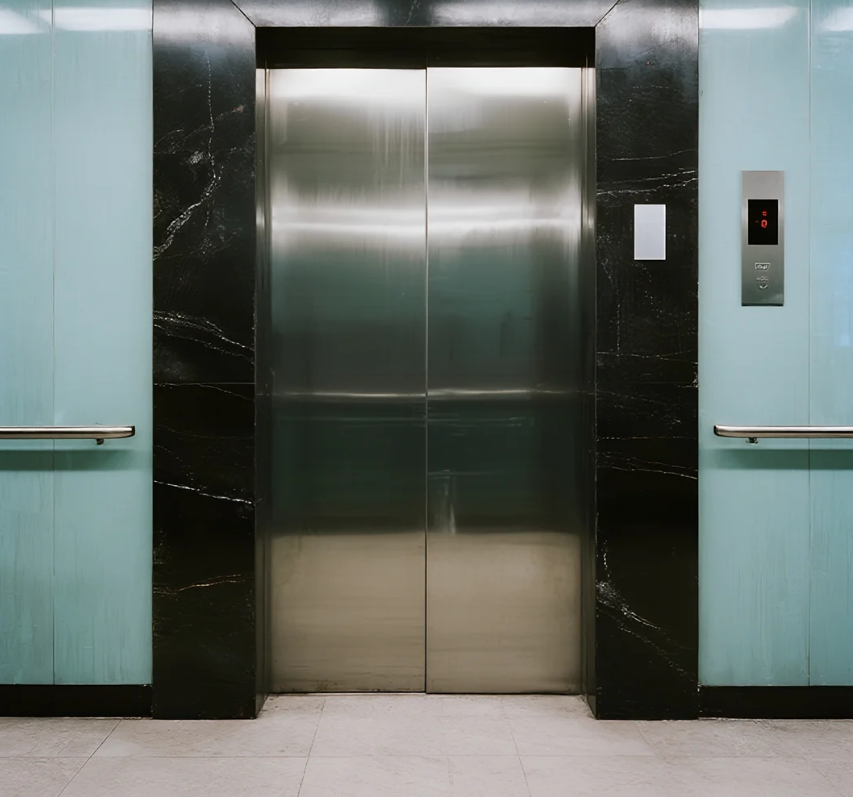
Hygiene and Easy Maintenance
Non-Porous Surface for Bacteria Prevention
Stainless steel delivers a genuinely non-porous working surface that stops dirt and microbes from sinking into the material, so cleaning removes contamination instead of trapping it. Choose factory-rolled स्टेनलेस स्टील शीट with a smooth or fine hairline finish and fabricators will form panels with tight seams and minimal crevices, which cut the number of microbial niches dramatically compared with textured plastics or unfinished wood. The chromium-rich surface chemistry creates a very thin, adherent oxide film that repels many soils and lets staff wipe carriage walls without scrubbing for long periods.
To exploit that advantage on a real site, owners and facility teams should take direct actions that a) reduce niches where bacteria hide and b) keep finishes intact so the surface stays non-porous:
-
Specify continuous welds and ground seams rather than butt joints; welds that fabricators grind smooth remove pockets where soil accumulates.
-
Passivate cut edges and drilled holes immediately after fabrication with a certified citric or nitric passivation step so the stainless regains its protective surface.
-
Design touchpoints as continuous shapes (full-length handrails, flush push plates) instead of segmented knobs and decorative trims that trap grime.
-
Log traffic and tailor cleaning frequency by duty: high-traffic elevators need cleaning 1–3 times per day, medium-traffic ones 3–7 times per week, and low-traffic cars once weekly; apply these schedules so teams remove soils before bacterial counts climb.
When teams pair the right finish, tight fabrication, and a strict cleaning cadence, elevators hold hygienic performance without heavy chemical use or long labor times. That combination reduces deep-clean cycles and keeps visible wear low, which saves money and limits downtime for refurbishments.
Simplified Cleaning and Sanitizing Process
Stainless steel shortens cleaning cycles because soils lift quickly and disinfectants spread evenly over the smooth surface, so crews spend less time and use fewer materials per car. In practice, routine wipe-downs on stainless cars commonly take 6–12 minutes per cabin for a single operator, while a full-detail clean runs 30–60 minutes depending on fixtures and traffic level. By contrast, textured or damaged finishes typically require more scrubbing and specialty chemicals, which inflate labor and supply costs.
| Surface type | Porosity / Surface behavior | Typical routine clean time (min/car) | Recommended clean frequency (high-traffic) | Typical visible life (years) | Typical annual maintenance cost (USD) |
|---|---|---|---|---|---|
| Stainless steel (smooth/hairline) | Non-porous — resists soil uptake | 6–12 | 7–21 times/week (daily to 3×/day) | 15–25 | $300–$1,200 |
| Painted or powder-coated steel | Semi-protective; scratches expose substrate | 8–20 | 7–21 times/week | 5–10 | $600–$2,500 |
| Decorative laminate or wood veneer | Joints at edges act semi-porous | 8–18 | 7–21 times/week | 3–8 | $800–$3,000 |
| Tempered glass panels | Non-porous; shows fingerprints | 6–10 | 7–21 times/week | 10–20 | $400–$1,000 |
Use that table to cost-out cleaning labor and lifetime replacement budgets; stainless steel usually costs less to maintain over time because crews spend less time on each car and refurbishment cycles come less frequently.
Concrete, repeatable cleaning and sanitizing steps for elevator teams (put these in your SOP and train staff until they do them reliably):
-
Pre-clean inspection (daily) — scan the car for gross soil, sticky spills, and visible handprint concentration zones; note problem spots in the log and tag for targeted action.
-
Remove loose soils — wipe or vacuum debris from floor edges and corners before touching wall panels so you don’t grind grit into the finish.
-
Routine wipe — apply a pH-neutral cleaner to a microfiber cloth and wipe panels along the metal grain using single-pass strokes; change cloth when visibly soiled to avoid redeposition. Expect 6–12 minutes per car for this step.
-
Spot treatment — for sticky residues, apply a diluted approved solvent per manufacturer instructions, agitate gently with a non-abrasive pad, then wipe dry. Avoid steel wool or abrasive powders that score the finish.
-
Disinfect when needed — choose an EPA-registered surface disinfectant and follow the label for dilution and contact time; typical contact windows range from 30 seconds to 10 minutes depending on chemistry, so let the product sit wet for the full labeled interval before wiping or allowing passengers to use the car.
-
Rinse only if product requires it — when cleaners or disinfectants instruct rinsing, follow that step using fresh water and a clean microfiber cloth; otherwise let the surface air-dry to preserve film integrity.
-
Document and review — log each clean with time, product, and operator; review logs weekly and adjust frequency if passenger counts or visible soils change.
Equip crews with the right kit to hit target times and quality: microfiber cloths (300–400 GSM) that trap soils, trigger sprayers with adjustable nozzles for controlled application, soft non-abrasive pads for spot work, and a small, lockable cart that stores single-use supplies to prevent cross-contamination. Train crews to follow the metal grain when wiping and to replace cloths frequently — those habits shave minutes off each clean and keep contaminants from reattaching.
When property managers follow the steps above and choose non-porous finishes, they shorten cleaning cycles, shrink chemical consumption, and stabilize labor costs. That combination delivers a cleaner cabin, a safer passenger experience, and a predictable maintenance budget.
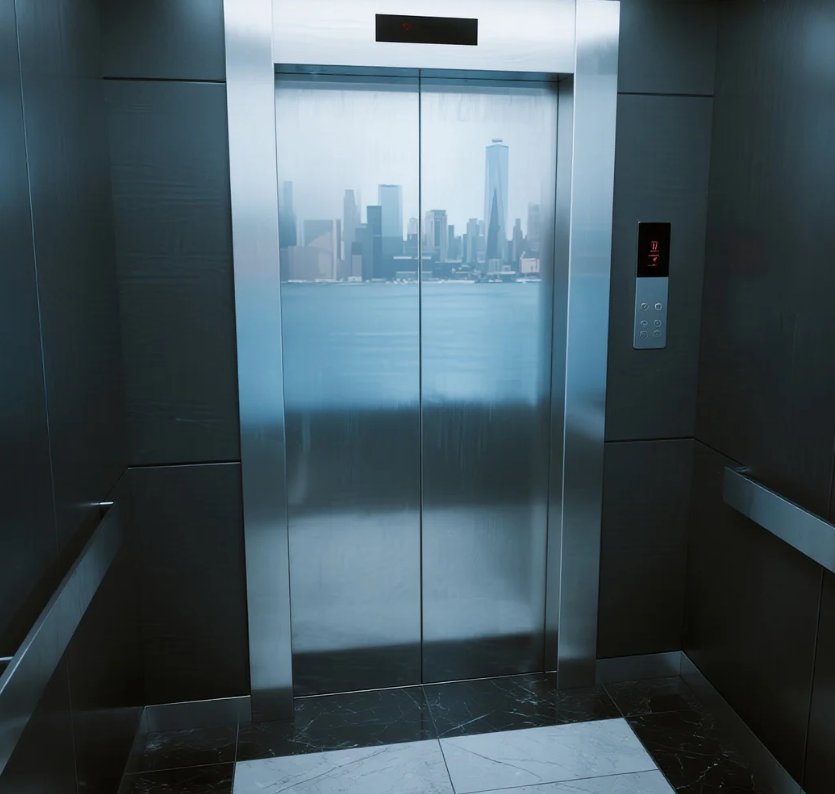
सौंदर्यात्मक आकर्षण आणि डिझाइनची लवचिकता
Modern, Professional Appearance for Public Spaces
Stainless steel instantly communicates precision, cleanliness, and professionalism, which is why it dominates in high-traffic public environments such as airports, hotels, and corporate buildings. The brushed or mirror-polished finishes reflect light in a way that makes elevator cabins appear more spacious, while also masking small smudges between cleanings. When using स्टेनलेस स्टील शीट for wall panels, the surface can be finished in different grain patterns or reflective levels without sacrificing durability.
Well-executed stainless interiors contribute to both passenger comfort आणि brand perception:
-
Light reflection and perceived space — A polished elevator wall can increase perceived cabin space by up to 15–20%, especially in compact buildings where elevators feel confined.
-
Color and texture integration — With PVD coatings or etched patterns, stainless panels can display custom colors like bronze, champagne, or graphite, while retaining the core mechanical strength and hygiene benefits of the base metal.
-
Wear-resistant beauty — Even after 15–25 years of service, properly maintained stainless panels maintain their original appearance without fading or peeling, unlike laminates that often degrade within 5–7 years.
This blend of long-term visual stability and upscale appeal makes stainless steel the go-to choice for property managers who want both form and function in public spaces.
Compatibility with Various Architectural Styles
Stainless steel’s adaptability lets it blend seamlessly with traditional, industrial, or ultra-modern architectural themes without feeling out of place. Architects can pair स्टेनलेस स्टील मेटल प्लेट with glass, wood, or stone accents to create distinct moods in a lobby while still keeping a unified building identity.
A well-planned stainless integration process considers three main factors:
-
Finish coordination — Choose satin finishes for classic interiors, high-polish for luxury hotels, and matte PVD coatings for industrial-modern spaces. This finish choice affects both light behavior and the emotional tone of the cabin.
-
Panel detailing — Vertical grain patterns elongate the visual height of the cabin, while horizontal lines create a wider, more open look — this is particularly useful when elevators have smaller footprints.
-
Fixture and lighting synergy — LED strips, touch-sensitive call buttons, and backlit panels work especially well with reflective stainless, amplifying light without requiring higher energy output.
| Architectural Style | Recommended Stainless Finish | Typical Integration Materials | Visual Effect | Maintenance Level |
|---|---|---|---|---|
| Industrial Modern | Matte PVD or brushed | Glass, exposed concrete | Sleek, understated | कमी |
| Classic Traditional | Satin or hairline | Wood veneer, brass trims | Warm, balanced | मध्यम |
| Luxury Contemporary | Mirror-polished | Marble, bronze | Bright, expansive | Low-Medium |
| Minimalist | Bead-blasted | Stone, aluminum | Soft, diffuse light | कमी |
By adjusting grain direction, surface reflectivity, and pairing materials, designers can make a stainless steel elevator cabin feel like it belongs to virtually any building style — from heritage properties to cutting-edge high-rises. This versatility not only preserves design harmony but also future-proofs the space against renovation trends.
For elevator projects that demand both style and lasting performance, Foshan Keenhai Metal Products Co. provides a full range of premium stainless steel materials and custom fabrication services. Their expertise in precision finishing and reliable supply chains ensures architects and builders get exactly the right stainless steel solutions to match their design vision and operational needs.
Learn more: What is a PVD stainless steel sheet?
